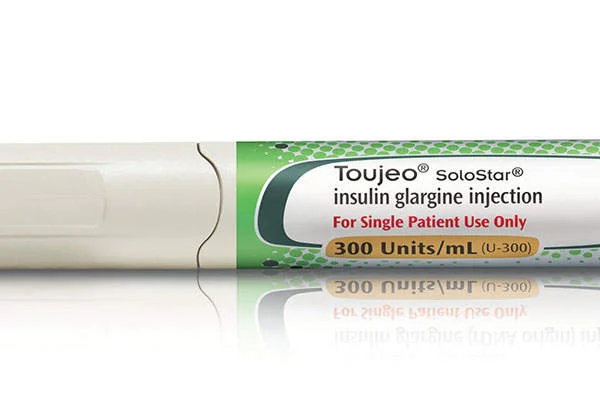Diabetes management is a journey of precision, patience, and education. With the landscape of diabetes treatment constantly evolving, patients and caregivers must stay informed about the latest advancements. One such advancement is Toujeo, a long-acting insulin that promises a smoother, more stable control of blood sugar levels. This blog post delves into the world of Toujeo diabetes medication, exploring its benefits, how it compares to other diabetes medications, and what patients can expect when incorporating it into their diabetes management plan.
Contents
How Is Toujeo Diabetes Medication Different From Others?
 Toujeo is a long-acting insulin analog used to manage type 1 and 2 diabetes. Here’s how Toujeo differentiates itself from other diabetes medications:
Toujeo is a long-acting insulin analog used to manage type 1 and 2 diabetes. Here’s how Toujeo differentiates itself from other diabetes medications:
- Active Ingredient and Concentration
Toujeo contains insulin glargine, the same active ingredient as Lantus, another popular long-acting insulin. However, Toujeo is formulated as a higher concentration (300 units/mL) compared to Lantus (100 units/mL). This higher concentration allows for a smaller volume of liquid to deliver the same number of insulin units, potentially leading to less pain upon injection.
- Duration of Action
Toujeo has a prolonged duration of action, lasting up to 36 hours, though it’s typically administered once daily. This extended action profile helps provide a more stable and predictable effect on blood sugar levels over 24 hours, reducing the risk of hypoglycemia (low blood sugar levels) overnight.
- Dosing and Administration
The higher concentration of Toujeo allows for a maximum of 160 units in a single injection with the Toujeo Max SoloStar pen. This may be advantageous for patients requiring higher doses of insulin, as it can reduce the number of injections needed.
- Patient Experience
The design of the Toujeo pen devices, such as the SoloStar and Max SoloStar, is aimed at improving the patient experience by making it easier to administer the correct dose. And it is crucial for effective diabetes management.
Overall, Toujeo’s unique formulation offers benefits and potentially smoother blood sugar control. These characteristics can make Toujeo a suitable option for individuals looking for stable, long-acting insulin therapy.
How Does Toujeo Diabetes Medication Work?
 Toujeo works by mimicking the actions of naturally occurring human insulin, a hormone essential for regulating blood sugar levels. As a long-acting insulin analog, its primary role is to help manage blood sugar levels throughout the day. Here’s a breakdown of how Toujeo diabetes medication works:
Toujeo works by mimicking the actions of naturally occurring human insulin, a hormone essential for regulating blood sugar levels. As a long-acting insulin analog, its primary role is to help manage blood sugar levels throughout the day. Here’s a breakdown of how Toujeo diabetes medication works:
Slow and Steady Release
The active ingredient in Toujeo is insulin glargine. This has been modified slightly from human insulin to change how it’s absorbed by the body. This modification allows it to dissolve slowly and steadily into the bloodstream after injection, providing a long-lasting effect. That helps to maintain more consistent blood sugar levels over 24 hours, with a duration of action that can last up to 36 hours.
Glucose Regulation
Once absorbed, insulin glargine works by facilitating the entry of glucose (sugar) from the bloodstream into the body’s cells, where it’s used for energy. It also reduces the liver’s production of glucose, further helping to lower blood sugar levels. This dual action helps prevent blood sugar spikes, particularly after meals and reduces the risk of prolonged periods of high blood sugar levels (hyperglycemia).
Mimicking Basal Insulin
In people without diabetes, the pancreas continuously releases small amounts of insulin to regulate blood sugar levels, known as basal insulin. Toujeo is designed to mimic this basal insulin secretion, providing a steady, low-level supply of insulin to manage blood sugar levels between meals and overnight, offering a more stable and predictable control.
Reduced Risk of Hypoglycemia
Because of its prolonged and steady action, Toujeo is associated with a lower risk of hypoglycemia (low blood sugar levels), especially nocturnal hypoglycemia, compared to some other long-acting insulin formulations. This is particularly important for individuals who are at risk of experiencing low blood sugar episodes or who have a fear of hypoglycemia impacting their quality of life.
Flexibility in Dosing Time
While Toujeo is typically administered once daily, its long duration of action provides some flexibility in dosing time. This can be advantageous for individuals with varying schedules. However, it’s important to maintain a consistent dosing schedule once established.
By providing a constant level of insulin, Toujeo diabetes medication helps to smooth out the fluctuations in blood glucose levels that can occur throughout the day and night. Ultimately, offering a cornerstone treatment option for individuals with type 1 diabetes (who produce little to no insulin) and in some cases type 2 diabetes (where the body doesn’t use insulin effectively).
What Are The Side Effects Of Toujeo Insulin?
Toujeo, like other insulin therapies, can cause side effects, although not everyone will experience them. Being aware of potential side effects can help individuals using Toujeo to monitor their health and communicate with their healthcare provider if concerns arise. Here are some of the side effects associated with Toujeo insulin:
Common Side Effects
- Hypoglycemia (Low Blood Sugar): The most common side effect of any insulin, including Toujeo, is hypoglycemia. Symptoms can include headache, dizziness, hunger, sweating, confusion, irritability, or shaking. Severe hypoglycemia can be dangerous and needs immediate treatment.
- Injection Site Reactions: These can include pain, redness, itching, hives, swelling, or inflammation at the site where the insulin is injected. Usually, these reactions are mild and resolve on their own.
- Weight Gain: Some people may experience weight gain when using insulin, including Toujeo. This is due to the anabolic effects of insulin and the decrease in glucosuria.
- Edema (Fluid Retention): Insulin, including Toujeo, can cause the body to retain extra fluid, leading to swelling in the ankles, feet, or other areas of the body.
Serious Side Effects
- Severe Hypoglycemia: While hypoglycemia is common, severe cases can lead to loss of consciousness, seizures, or death if not treated promptly.
- Allergic Reactions: Rarely, people may experience serious allergic reactions to Toujeo, with symptoms including a whole-body rash, difficulty breathing, fast heartbeat, sweating, or feeling faint. Immediate medical attention is required for severe allergic reactions.
- Hypokalemia (Low Potassium Levels): Insulin treatments, including Toujeo, can cause potassium levels to drop, a condition known as hypokalemia. Severe hypokalemia can be life-threatening and can affect your heart rhythm.
Long-term Side Effects
- Lipodystrophy: Repeated insulin injections at the same site can cause the fatty tissue under the skin to either thicken (lipohypertrophy) or shrink (lipoatrophy). And, affecting how insulin is absorbed and may necessitate adjustments in dosing.
While this list covers some of the more common and serious side effects of Toujeo, it’s not exhaustive. Any new symptoms or concerns should be discussed with a healthcare provider. They can provide guidance based on an individual’s medical history and overall health.
How Much Does Toujeo Cost Per Month?
 The cost of Toujeo can vary widely depending on several factors, including:
The cost of Toujeo can vary widely depending on several factors, including:
- the dosage required
- the pharmacy from which it is purchased
- insurance coverage
- geographical location
Without insurance, the retail price of Toujeo can be quite high, often reaching several hundred dollars per month. For instance, a single Toujeo Solostar pen, which contains 450 units of insulin glargine, may cost around $100 to $200 or more at some pharmacies. Patients requiring higher doses or more frequent injections could face significantly higher monthly expenses. It’s important to note that prices can fluctuate, and some pharmacies or online retailers may offer it at slightly lower costs.
To mitigate the high cost of Toujeo and other insulins, patients are encouraged to explore various assistance programs and discounts. Patients should consult with their insurance provider to understand their coverage details and any deductible requirements.
Conclusion
In conclusion, Toujeo diabetes medication stands out as a long-acting insulin option that offers benefits such as a steady release into the bloodstream for up to 36 hours. And, providing more consistent blood sugar control with a lower risk of hypoglycemia. While it does have potential side effects, such as low blood sugar levels and injection site reactions, its overall profile makes it a valuable tool for many individuals managing diabetes.
The cost of Toujeo can be high, but assistance programs and insurance coverage may help make it more affordable. As with any medication, it’s important to discuss with a healthcare provider to determine if Toujeo is the right choice for your diabetes management plan. Do you want to get rid of diabetes? Join our online diabetes treatment program and reverse Diabetes naturally through lifestyle changes such as a Personalized Diet plan, Exercise, Yoga, dieticians, and health coaches.

